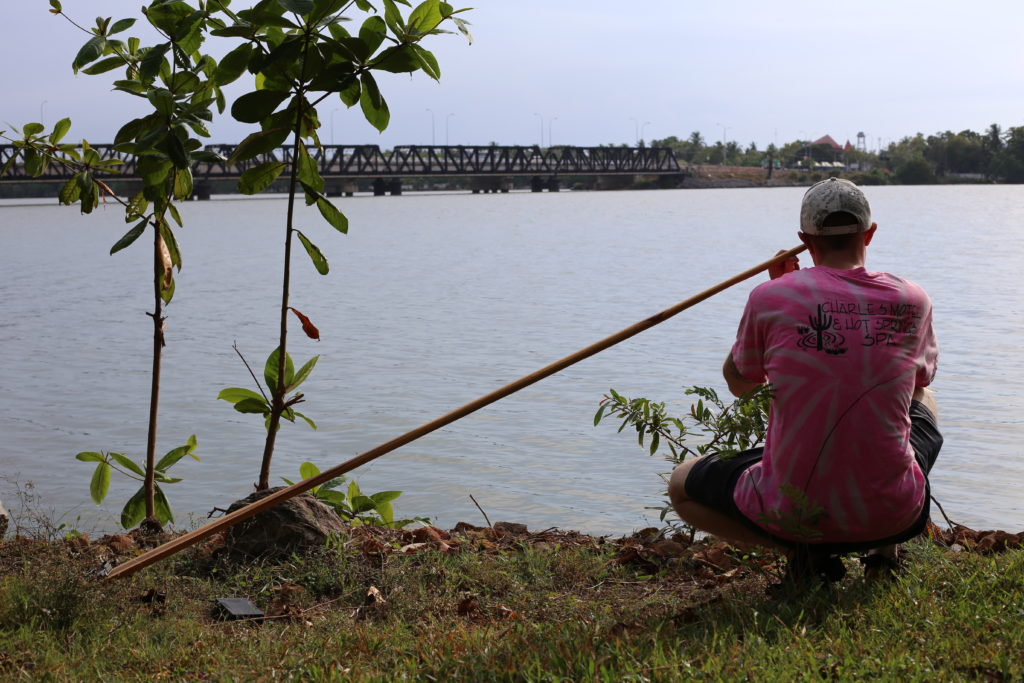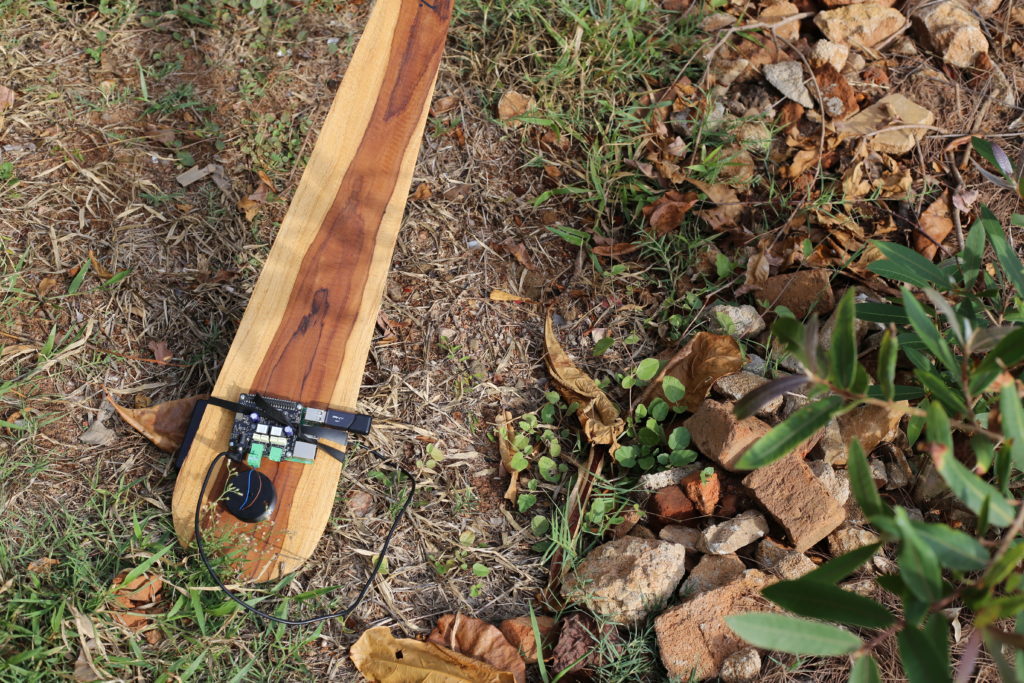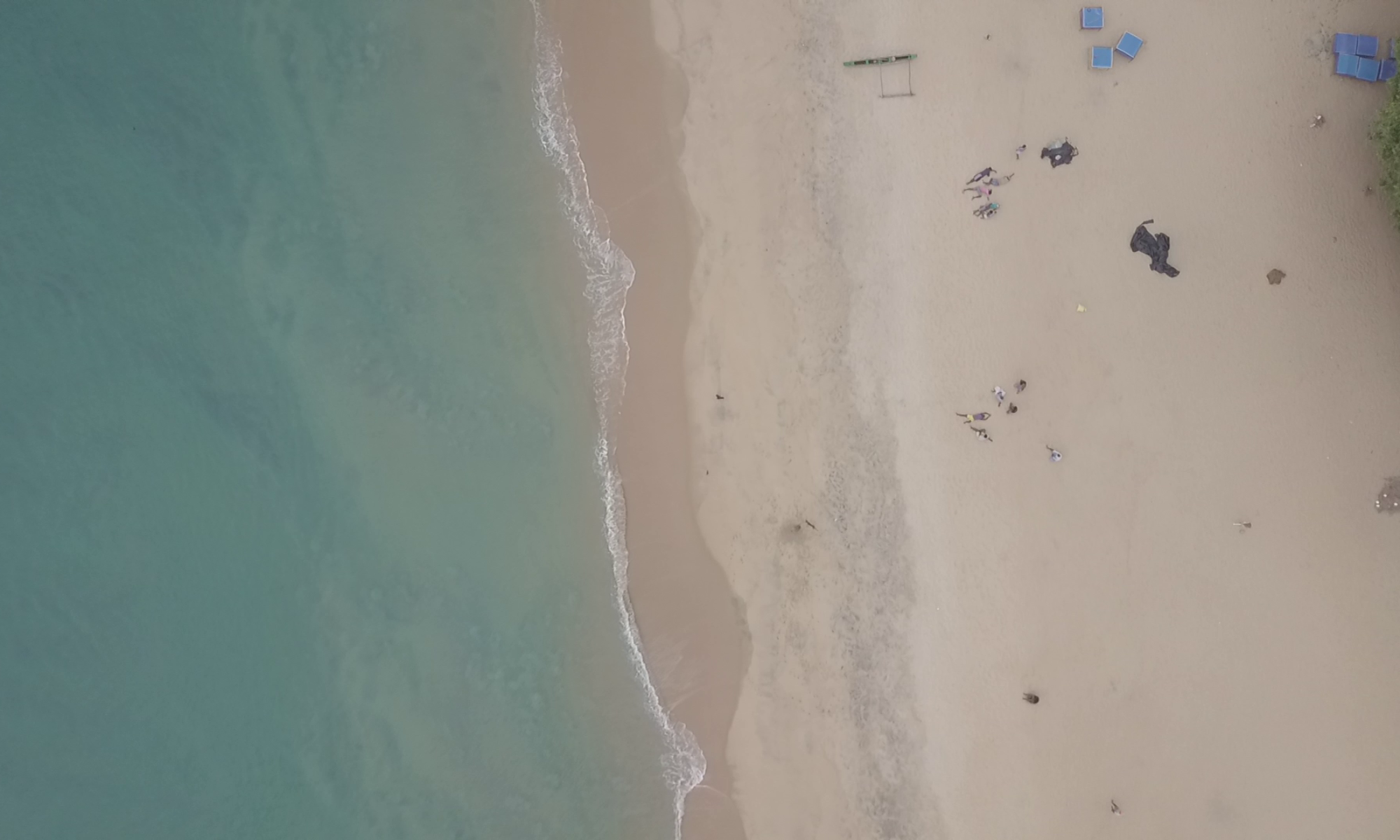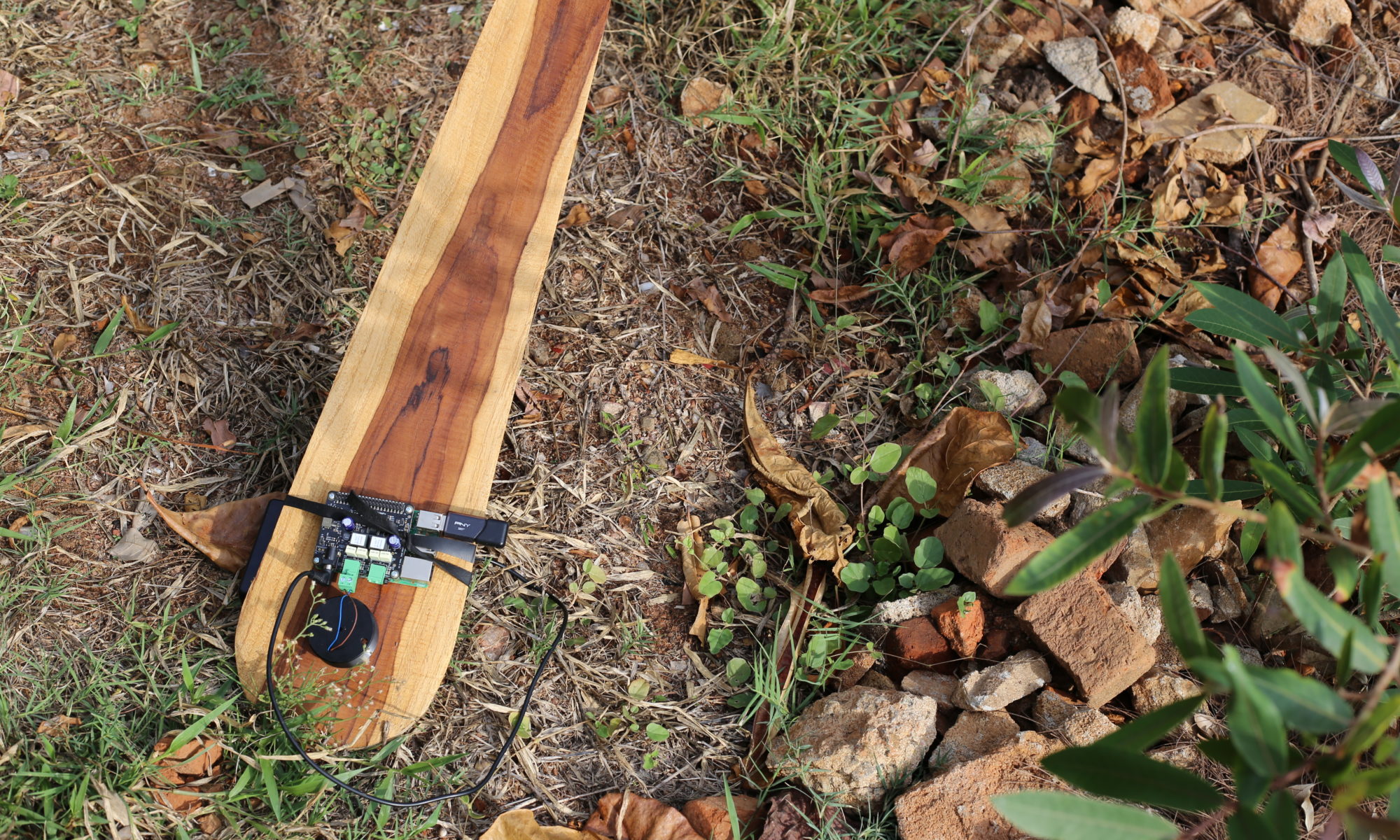
Original project description
I’d like to explore the lagoon of Batticaloa and record the sounds of the singing fish with a hydrophone, then create an installation in a public area so everyone can listen to them. I read that local fishermen put the ends of their oars in their ears to amplify the sounds of the fish, so I’d like to incorporate oars into the installation to pay homage to this practice.
How it turned out
Due to the logistical situation on the ground, I had a bit less time than anticipated to finish my project. However, with help from a few friends I succeeded in creating the Sonic Oar.
I had heard that the singing fish were loudest and most active just around the full moon. Though I arrived about a week after that, I found the fish still active around 10pm each night when I started recording. I didn’t do particularly scientific research to determine exactly when they started and stopped, since my project focused on the sounds themselves more than their behavior.
One night I recorded off one of the fishing platforms at the Riviera Resort, dipping my hydrophone just a few feet into Batticaloa Lagoon. It was amazing how immediately their gargling, froggy croaks became audible. There were obviously many fish vocalizing simultaneously. However, with a monophonic hydrophone it was hard to localize how many fish there were or how far apart they were. It would be fun to come back with a stereo pair of hydrophones to get a better sense of how they are moving or not moving and how spaced apart they are. I’ll be bringing a pair of hydrophones on my next underwater recording project!
The next night Lucii and I followed in the footsteps of J.W. Lange and recorded from Kallady Bridge. From the middle of the bridge, we lowered the hydrophone about 15 feet below the water, noticeably deeper than at Riviera. The fish were audible, but there was more background noise from traffic on the bridge, even at that depth. We tried another spot towards the eastern side of the bridge, and the fish were much quieter – in fact, barely audible.
Creating the sonic oar installation itself turned out to be quite simple. I learned from my experience at Dinacon 2 in Gamboa that power is one of the most crucial components of any hacking project. Since I wasn’t sure exactly what would be available in Batticaloa, I brought a battery pack and all the cables and electronics I needed with me. All I needed to do was record the singing fish, load up the recordings onto an SD card, find an oar, and attach the electronics to the oar.
I also learned that when using a Raspberry Pi for media playback purposes, it is helpful to set up a script so that you can load new media files via an SD card without having to boot up and connect to the Pi. Here’s a gist that explains my Raspberry Pi set up. I ultimately included a playlist featuring one of the recordings Betty had made at the full moon from a boat, along with one of mine made from the shore at Riviera Resort.

The basic setup for the electronics was a Raspberry Pi with a IQaudio DigiAMP+ hat on it, a 12V battery (behind the oar in the photo above) powering the amplifier and a Surface Transducer from Sparkfun. A startup script on the Pi played back audio files from an inserted SD card, and the sound was amplified through the DigiAmp+ hat and sent through the surface transducer, which turned the surface of the oar into a speaker.
The surface transducer was attached to the blade of a local fishing oar, that I was told was made of mango wood. This was a happy surprise for me, since mango is known for its resonance and is used to make some musical instruments.
Once I got the electronics set up, I was able to hear the recordings through the wood for the first time. I was surprised at how well the sounds transferred through the surface. I used a set of in-ear binaural microphones (which record sound in a way that mimics how our ears do) to record myself listening to the resonance. The audio from this recording is included below, with a video of me listening.
Overall, I’m pleased with how this project turned out. I think it pays homage to the beauty and ecological curiosities of Batticaloa in a simple way. I wish more people could have experienced the installation, but hopefully this documentation makes it accessible to a few more. Thank you to Shanjeevan for procuring the oar, without which this project wouldn’t be possible. Thanks to Betty for the additional singing fish recording, and thanks to Lucii, Skye, Harold and Andy for their help with installation and moving things from place to place!


